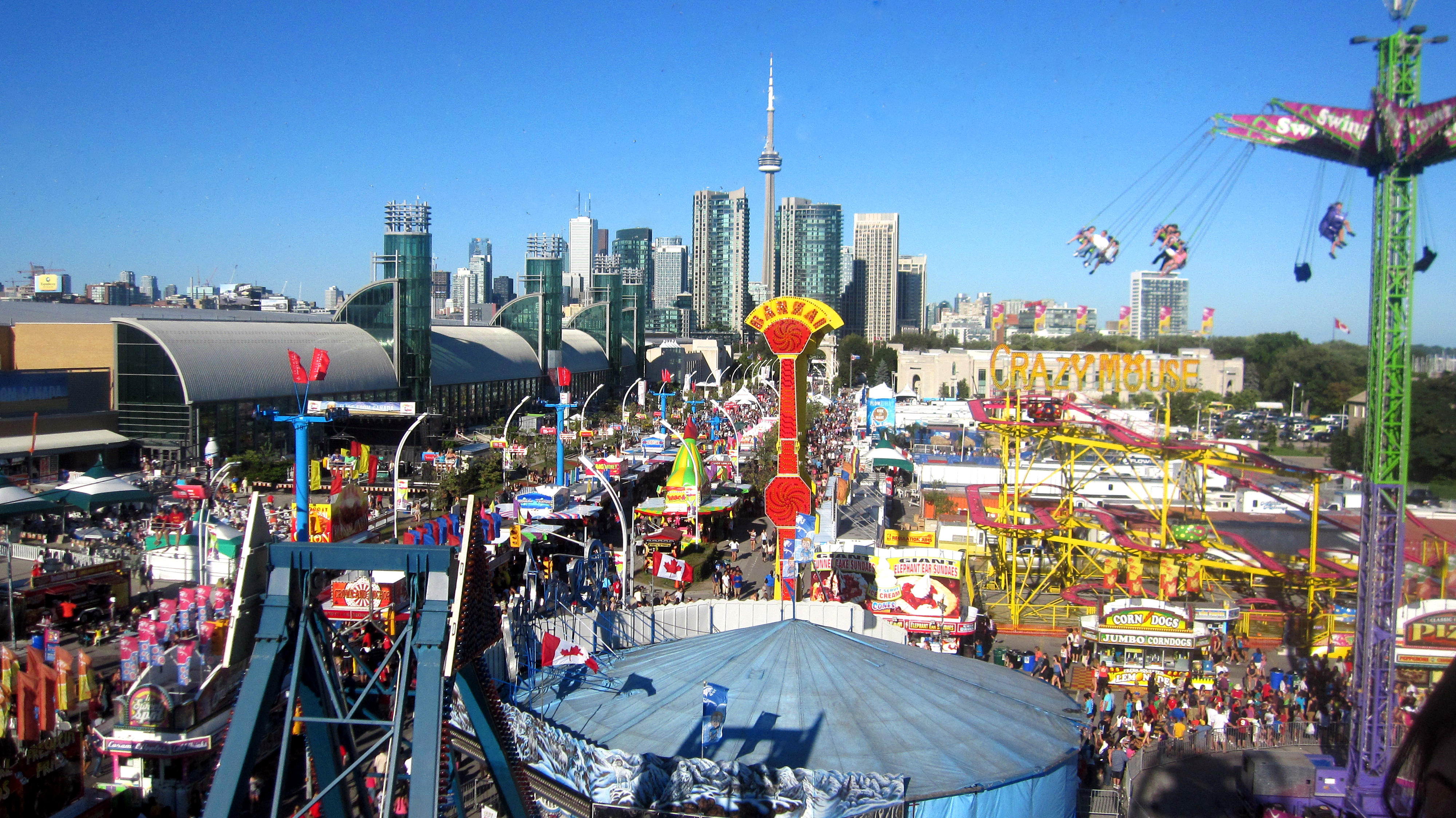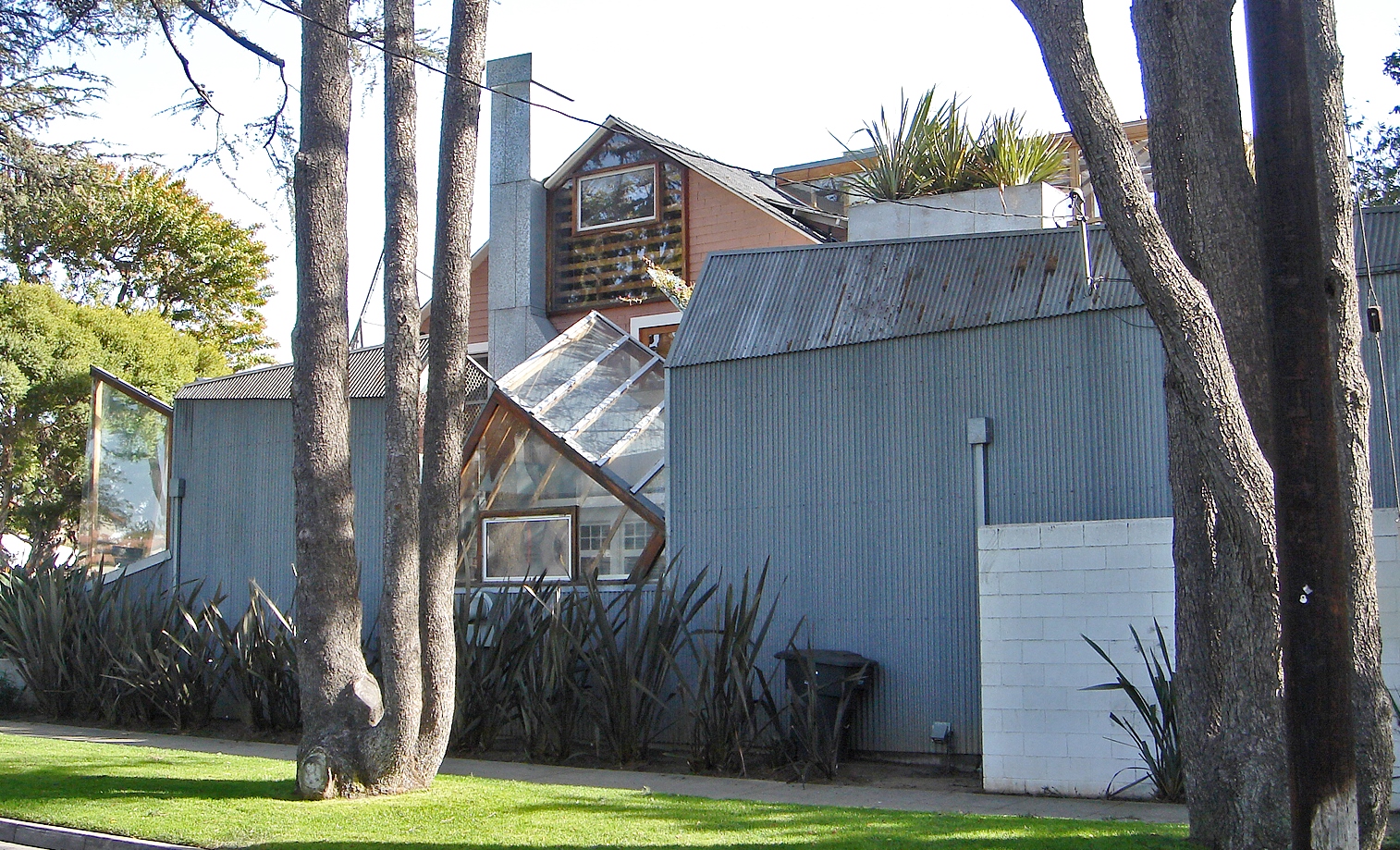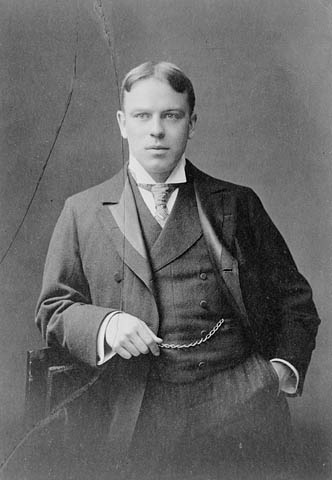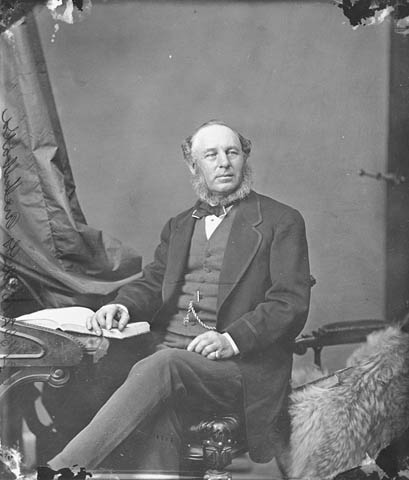|
Grange Park (neighbourhood)
Grange Park is a neighbourhood in downtown Toronto, Ontario, Canada. It is bounded on the west by Spadina Avenue, on the north by College Street, on the east by University Avenue and on the south by Queen Street West. It is within the 'Kensington-Chinatown' planning neighbourhood of the City of Toronto. Its name is derived from the Grange Park public park. The commercial businesses of Chinatown extend within this neighbourhood. History Grange Park was initially an elite neighbourhood, with mansions lining Beverley Street. The neighbourhood took its name from The Grange, a mansion built in 1817 by G. D'Arcy Boulton, Auditor-General of Upper Canada and a member of the prominent Boulton family. The Grange is the oldest standing brick house in Toronto. It served as the first home of OCAD University, and today forms a wing of the Art Gallery of Ontario. Prominent early residents of the neighbourhood included George Brown, a Father of Confederation and founder of ''The Globe'' newsp ... [...More Info...] [...Related Items...] OR: [Wikipedia] [Google] [Baidu] |
Grange Park (Toronto)
Grange Park is a prominent and well-used public park in downtown Toronto, Ontario in Canada. It is located south of the Art Gallery of Ontario, next to the Ontario College of Art and Design University (OCADU) and north of University Settlement House, at the north end of John Street. The Park lends its name to the Grange Park neighbourhood in the vicinity of the park. Historically, the park was the backyard of The Grange, a manor that was later expanded and became the Art Gallery of Ontario. Features After a major renovation completed by July 2017, the park includes the following features: * Henry Moore sculpture ''Large Two Forms'', originally located next to the Art Gallery of Ontario at the corner of Dundas and McCaul streets. * Weston family fountain. * Splash pad and surrounding seating. * Playground facilities geared to age with smaller, softer structures for younger children and taller structures for older children. * A carriage path leading from John Street and circl ... [...More Info...] [...Related Items...] OR: [Wikipedia] [Google] [Baidu] |
The Grange (Toronto)
The Grange is a historic Georgian manor in downtown Toronto, Ontario. It was the first home of the Art Museum of Toronto. Today, it is part of the Art Gallery of Ontario. The structure was built in 1817, making it the 12th oldest surviving building in Toronto and the oldest remaining brick house. It was built for D'Arcy Boulton (1785–1846), a son of G. D'Arcy Boulton. He was one of the town's leading citizens and part of the powerful Boulton family, which played an important role in the Family Compact. Originally, it was considerably west of the town of York, but over time, the town grew and Boulton sold his considerable land holdings surrounding the manor for a large profit. The house was inherited by D'Arcy's son and Toronto mayor, William Henry Boulton. When he died in 1874, the house passed to his widow, Hariette Boulton. She remarried the prominent scholar Goldwin Smith, and the couple lived in The Grange for the rest of their lives. Upon Goldwin's Smith's death in 191 ... [...More Info...] [...Related Items...] OR: [Wikipedia] [Google] [Baidu] |
Baldwin Village
Baldwin Village is a commercial enclave in Toronto, Ontario, Canada. It is located in the west of downtown Toronto, within the Grange Park (neighbourhood), Grange Park neighbourhood, one block north of Dundas Street, Dundas Street West, between Beverley and McCaul Streets. The former modestly sized homes on the street have been converted to restaurants and small shops selling arts, crafts and curios. History The street was laid out and named after William Warren Baldwin, who owned much of the area, in the early nineteenth century. The neighbourhood developed in the early 20th century as the Jewish ghetto moved westward from its original location in The Ward, Toronto, The Ward towards what became the Kensington Market Jewish community, and the strip became home to a number of Jewish stores and restaurants. As the Jewish community moved north from downtown, the area's proximity to Chinatown, Toronto, Chinatown led it to be populated by Chinese-Canadians. Also close to the Universit ... [...More Info...] [...Related Items...] OR: [Wikipedia] [Google] [Baidu] |
Canadian National Exhibition
The Canadian National Exhibition (CNE), also known as The Exhibition or The Ex, is an annual event that takes place at Exhibition Place in Toronto, Ontario, Canada, on the third Friday of August leading up to and including Canadian Labour Day, the first Monday in September. With approximately 1.5 million visitors each year, the CNE is Canada's largest annual fair and the sixth largest in North America. The first Canadian National Exhibition took place in 1879, largely to promote agriculture and technology in Canada. Agriculturists, engineers, and scientists exhibited their discoveries and inventions at the CNE to showcase the work and talent of the nation. As Canada has grown as a nation, the CNE has reflected the growth in diversity and innovation, though agriculture and technology remain a large part of the CNE. For many people in the Greater Toronto Area and the surrounding communities, the CNE is an annual family tradition. Site The CNE is held at Exhibition Place, which ... [...More Info...] [...Related Items...] OR: [Wikipedia] [Google] [Baidu] |
Provincial Agricultural Association Of Canada West
The Provincial Agricultural Fair of Canada West was an annual provincial agricultural fair held in various places in Canada West and after 1867 in Ontario. The fair was established in 1846 and sponsored by the Provincial Agricultural Association and the Board of Agriculture for Canada West. It replaced an earlier attempt in 1792 by the Agricultural Society of Upper Canada founded in Newark in 1792. The fair was mainly an agricultural themed show featuring horses and domesticated animals from around what was still a very rural pre-Confederation Ontario. It would last until 1878 as it met competition with large number of local fairs that emerged across some towns and counties in Ontario and eventually succeeded by the Canadian National Exhibition in 1879. List of Provincial Agricultural Association of Canada West/Ontario From 1858 the fair rotated between Toronto, Kingston, Hamilton and London in the same sequence for the duration of the fair's existence. Following Toronto's ... [...More Info...] [...Related Items...] OR: [Wikipedia] [Google] [Baidu] |
Frank Gehry
Frank Owen Gehry, , FAIA (; ; born ) is a Canadian-born American architect and designer. A number of his buildings, including his private residence in Santa Monica, California, have become world-renowned attractions. His works are considered among the most important of contemporary architecture in the 2010 World Architecture Survey, leading '' Vanity Fair'' to call him "the most important architect of our age". He is also the designer of the National Dwight D. Eisenhower Memorial. Early life Gehry was born Frank Owen Goldberg on February 28, 1929, in Toronto, Ontario, to parents Sadie Thelma (née Kaplanski/Caplan) and Irving Goldberg. His father was born in Brooklyn, New York, to Russian Jewish parents, and his mother was a Polish Jewish immigrant born in Łódź.''Finding Your Roots'', February 2, 2016, PBS A creative child, he was encouraged by his grandmother, Leah Caplan, with whom he built little cities out of scraps of wood. With these scraps from her husband's hard ... [...More Info...] [...Related Items...] OR: [Wikipedia] [Google] [Baidu] |
The Ward, Toronto
The Ward (formally St. John's Ward) was a neighbourhood in central Toronto, Ontario, Canada, in the 19th and early 20th centuries. Many new immigrants first settled in the neighbourhood; it was at the time widely considered a slum. It was bounded by College, Queen, and Yonge Streets and University Avenue, and was centred on the intersection of Terauley (now Bay) and Albert Streets. Population For several decades of the late 19th and early 20th century, it was a highly dense mixed-used neighbourhood where successive waves of new immigrants would initially settle before establishing themselves. Characterized by authorities in the 19th century as a slum, it was the home of refugees from the European Revolutions of 1848, the Great Famine of Ireland, the Underground Railroad, and then refugees from Russia and Eastern Europe. It was the centre of the city's Jewish community from the late 19th century until the 1920s when the Jewish community moved west to Spadina Avenue and Kensingto ... [...More Info...] [...Related Items...] OR: [Wikipedia] [Google] [Baidu] |
Edwardian Architecture
Edwardian architecture is a Neo-Baroque architectural style that was popular in the British Empire during the Edwardian era (1901–1910). Architecture up to the year 1914 may also be included in this style. Description Edwardian architecture is generally less ornate than high or late Victorian architecture, apart from a subset – used for major buildings – known as Edwardian Baroque architecture. The Victorian Society campaigns to preserve architecture built between 1837 and 1914, and so includes Edwardian as well as Victorian architecture within its remit. Characteristics The characteristic features of the Edwardian Baroque style were drawn from two main sources: the architecture of France during the 18th century and that of Sir Christopher Wren in England during the 17th—part of the English Baroque (for this reason Edwardian Baroque is sometimes referred to as "Wrenaissance"). Sir Edwin Lutyens was a major exponent, designing many commercial buildings in what he ter ... [...More Info...] [...Related Items...] OR: [Wikipedia] [Google] [Baidu] |
People Visiting The Grange
A person ( : people) is a being that has certain capacities or attributes such as reason, morality, consciousness or self-consciousness, and being a part of a culturally established form of social relations such as kinship, ownership Ownership is the state or fact of legal possession and control over property, which may be any asset, tangible or intangible. Ownership can involve multiple rights, collectively referred to as title, which may be separated and held by different ... of property, or legal obligation, legal responsibility. The defining features of personhood and, consequently, what makes a person count as a person, differ widely among cultures and contexts. In addition to the question of personhood, of what makes a being count as a person to begin with, there are further questions about personal identity and self: both about what makes any particular person that particular person instead of another, and about what makes a person at one time the same person as they w ... [...More Info...] [...Related Items...] OR: [Wikipedia] [Google] [Baidu] |
William Lyon Mackenzie King
William Lyon Mackenzie King (December 17, 1874 – July 22, 1950) was a Canadian statesman and politician who served as the tenth prime minister of Canada for three non-consecutive terms from 1921 to 1926, 1926 to 1930, and 1935 to 1948. A Liberal, he was the dominant politician in Canada from the early 1920s to the late 1940s. King is best known for his leadership of Canada throughout the Great Depression and the Second World War. He played a major role in laying the foundations of the Canadian welfare state and established Canada's international reputation as a middle power fully committed to world order. With a total of 21 years and 154 days in office, he remains the longest-serving prime minister in Canadian history. Born in Berlin, Ontario (now Kitchener), King studied law and political economy in the 1890s and became concerned with issues of social welfare. He later obtained a PhD – the only Canadian prime minister to have done so. In 1900, he became deputy minister ... [...More Info...] [...Related Items...] OR: [Wikipedia] [Google] [Baidu] |
Fathers Of Confederation
The Fathers of Confederation are the 36 people who attended at least one of the Charlottetown Conference of 1864 (23 attendees), the Quebec Conference of 1864 (33 attendees), and the London Conference of 1866 (16 attendees), preceding Canadian Confederation. Only eleven people attended all three conferences. Table of participation The following table lists the participants in the Charlottetown, Quebec, and London Conferences and their attendance at each stage. Group photographs Other possible claimants to title Four other individuals have been labelled as Fathers of Confederation. Hewitt Bernard, who was the recording secretary at the Charlottetown Conference, is considered by some to be a Father of Confederation. The leaders most responsible for bringing three specific provinces into Confederation after 1867 are also referred to as Fathers of Confederation. * The provisional government established by Louis Riel ultimately negotiated the terms under which Manitoba entered t ... [...More Info...] [...Related Items...] OR: [Wikipedia] [Google] [Baidu] |
George Brown (Canadian Politician)
George Brown (November 29, 1818 – May 9, 1880) was a British-Canadian journalist, politician and one of the Father of Confederation#Fathers of Confederation, Fathers of Confederation; attended the Charlottetown (September 1864) and Quebec (October 1864) conferences. A noted Reform Party (pre-Confederation), Reform politician, he is best known as the founder and editor of the ''Toronto Globe'', Canada's most influential newspaper at the time, and his leadership in the founding of the Liberal Party of Canada, Liberal Party in 1867. He was an articulate champion of the grievances and anger of Upper Canada (Ontario). He played a major role in securing national unity. His career in active politics faltered after 1865, but he remained a powerful spokesman for the Liberal Party of Canada, Liberal Party. He promoted westward expansion and opposed the policies of Conservative Prime Minister John A. Macdonald. Early life Scotland George Brown was born in Alloa, Clackmannanshire, Scotlan ... [...More Info...] [...Related Items...] OR: [Wikipedia] [Google] [Baidu] |





_1938.jpg)


.jpg)